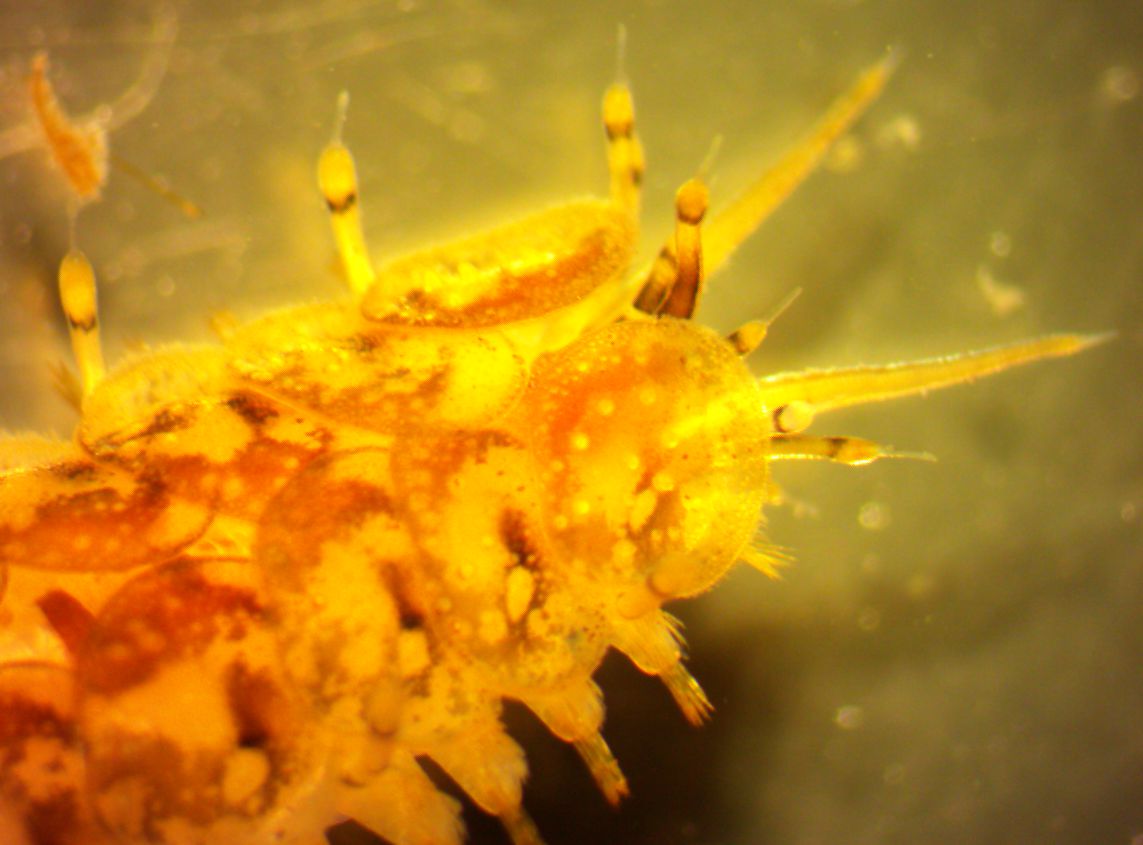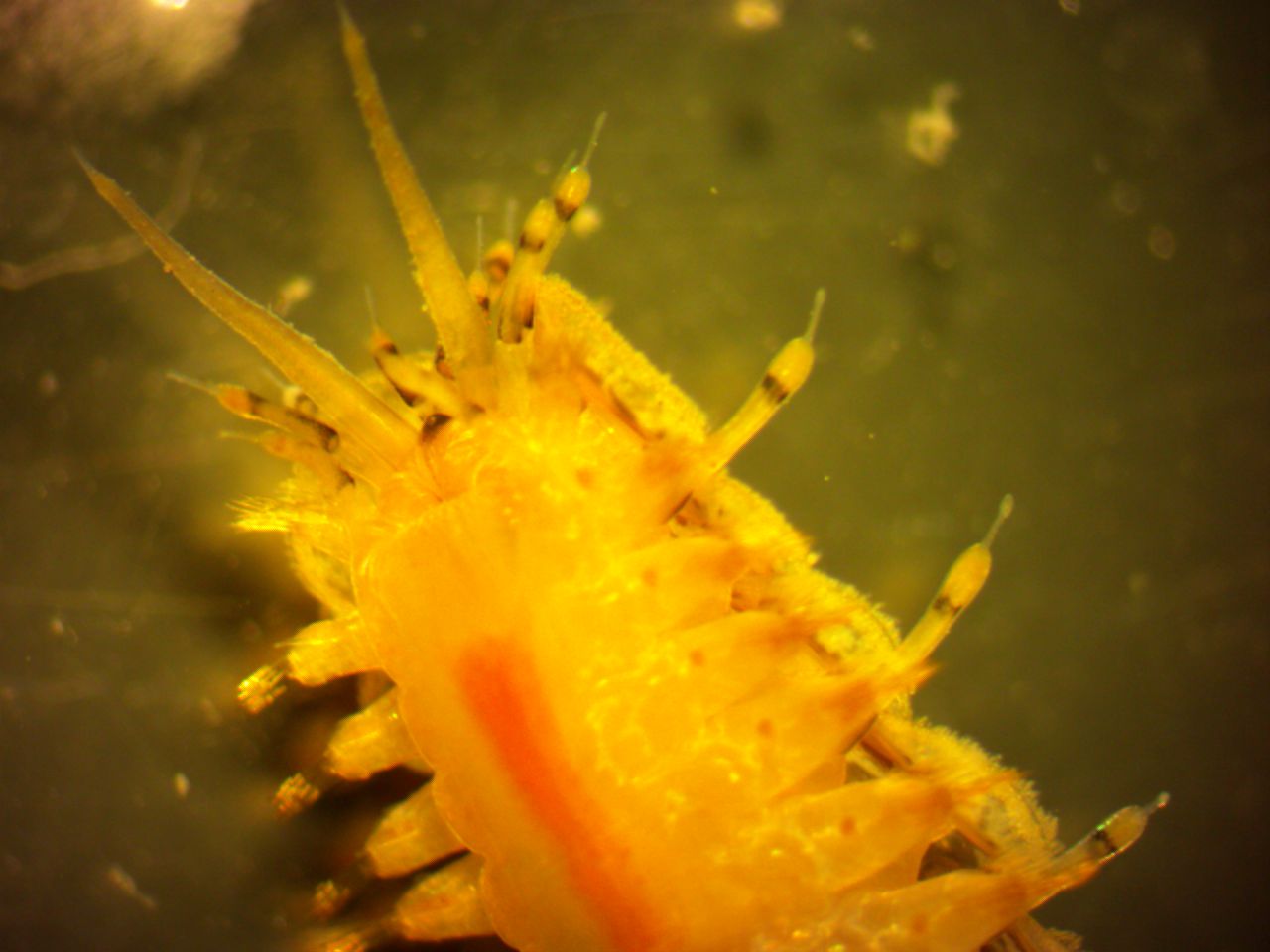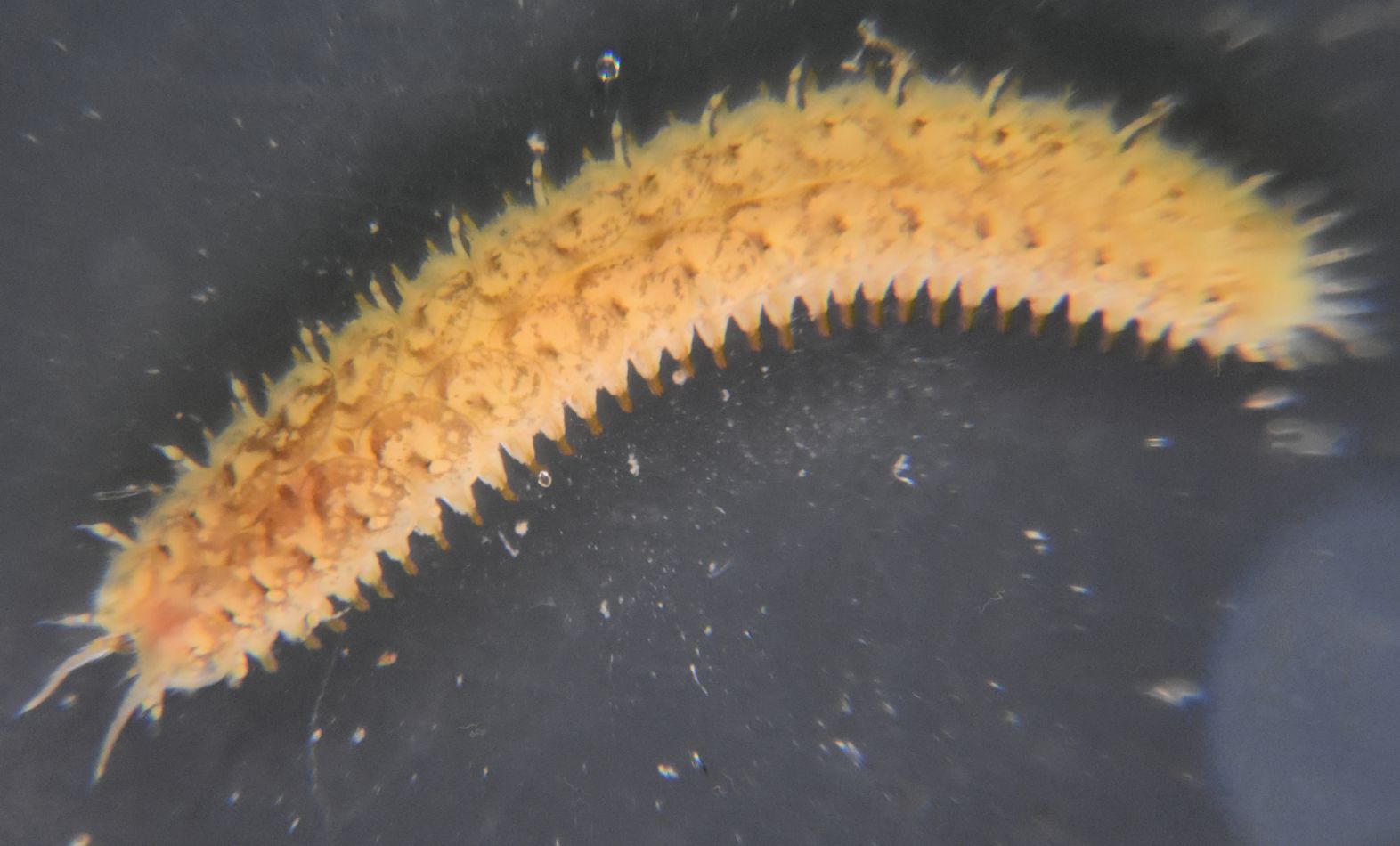Description: As with other members of Family Polynoidae, the dorsal side of this species is covered with a series of platelike elytra scales. Halosydna brevisetosa has 18 pairs of shield-shaped elytra (photo). The elytra are often light brown with white or black spots at the point of attachment. The dorsal chetae are much shorter than the ventral ones, leading to the brevisetosa part of the name. Typically brown or grayish. Often has white or black spots on each elytrum where its stalk attaches to the animal. May have transverse color bands. Up to 11 cm long, but usually 2 cm or shorter if not symbiotic.
How to Distinguish from Similar Species: No other local scaleworms have 18 pairs of elytra.
Geographical Range: Alaska to northern Mexico. Very common in California intertidal.
Depth Range: Intertidal to 545 m.
Habitat: In mussel beds, on floats, seaweed holdfasts, or symbiotic in the tubes of other polychaetes.
Biology/Natural
History: This very
common predatory species is often found living symbiotically in the
tubes
of other polychaetes (especially Terebellids),
on the nudibranch Melibe
leonina where it feeds on the nudibranch's fecal
pellets, or under
clumps of Mytilus
californianus mussels. It often eats other
worms, scavenges,
or eats detritus. When disturbed, it may shed some of its elytra
scales but it can grow them back within a few days. Sexes are separate,
and gonads are found in segments 12-34. The gametes can be clearly seen
through the body wall. The sperm are white and the eggs are pale green.
Fertilization is external, with the gametes released through the
nephridium
(kidney duct). Larvae generally settle when they are about 0.9 mm long
and have 11 segments and 4 pairs of elytra.
There is a space between the dorsal
surface of Halosydna brevisetosa and the dorsal elytra.
Cilia
on the body surface pump water posteriorly through this space, while
the
coelomic fluid below the body wall moves anteriorly in a countercurrent
manner. This likely enhances gas exchange and oxygenation of the
coelomic
fluid. The anus is unusual in that it exits dorsally,
anterior to the pygidium. The nervous system can generally be seen as a
reddish color because of the hemoglobin associated with it.
| Return to: | |||
| Main Page | Alphabetic Index | Systematic Index | Glossary |
References:
Dichotomous Keys:Carlton, 2007
Flora and Fairbanks, 1966
Kozloff, 1987, 1996
General References:
Harbo,
2011
Kozloff,
1993
Lamb and Hanby, 2005
Morris
et al., 1980
Niesen,
1994
Niesen,
1997
Ricketts
et al., 1985
Scientific Articles:
Web sites:
General Notes and
Observations: Locations, abundances,
unusual behaviors:

A dorsal
closeup
of Halosydna
brevisetosa,
showing the elytra.
Stacked photo by Dave Cowles, August 2018

A ventral view
of
the same animal, showing the parapodia.
Stacked photo by Dave Cowles, August 2018

A dorsal
view of
the head. Photo by Dave Cowles, August 2018

A ventral
view of
the anterior end. Note the mouth on the peristomial
segment and the red ventral
streak denoting the central nervous system.

Another dorsal
view
of the whole animal. Stacked photo by Dave Cowles, August 2018
Authors and Editors
of Page:
Dave Cowles (2018): Created original page
CSS coding for page developed by Jonathan Cowles
Salish Sea Invertebrates web site provided courtesy of Walla
Walla University
